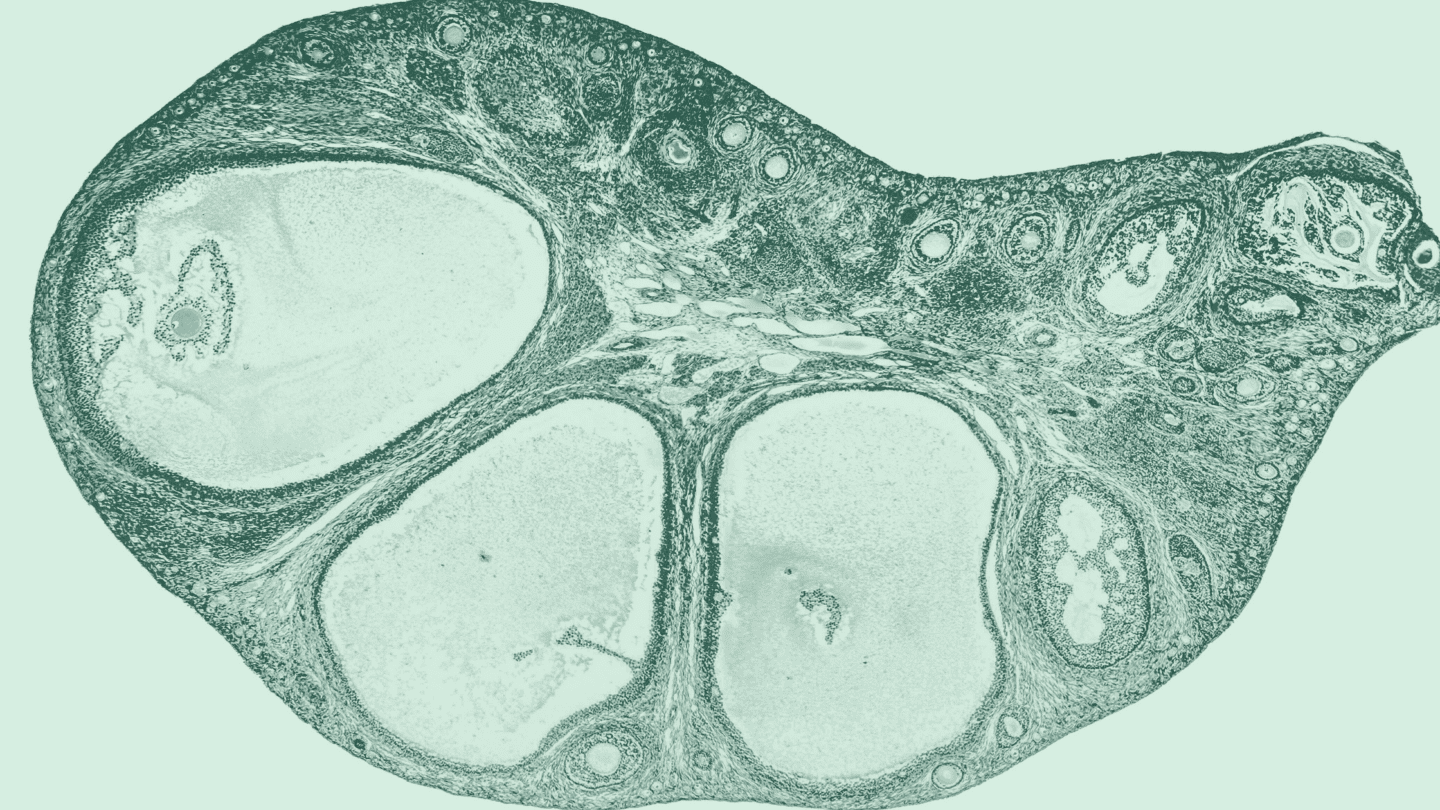Let’s cast aside the outdated notion that sex should be a source of stigma and shame. As long as you’re interested in the experience, and your partner seeks your consent — and would take to the streets for your right to bodily autonomy — sex is natural and can be quite fun.
It’s even good for your health! Sex can solidify your bond with your partner, give your immune system a boost, stave off cardiovascular disease, and more. So instead of counting sheep, grab your (consenting) partner and count these healthy reasons to roll around before hitting the hay tonight.
Sex improves sleep
Seeking more shut-eye? Having sex might be one path to a better night’s rest. Research on the subject is fairly slim, but one team of Australian researchers thinks it’s an idea well worth pursuing. Why? People definitely perceive that their sleep is better after an orgasm.1
The researchers surveyed 778 people and found around 60% believed they got to sleep faster, and slept better, after sex with a partner. And over 70% thought their sleep quality was better after an orgasm from sex with a partner.
It’s great exercise
Looking to burn some extra calories? Try sex. Researchers estimate men burn about 4 calories per minute, and women about 3 calories per minute, during sexual activity.2
What’s more, researchers have found that people who are in good physical health are more likely to be sexually active than their peers. Although, admittedly, this one could go either way (that is, does sex cause good health, or are people in good shape more likely to have sex?)
Like what you’re reading? Get the latest straight to your inbox 💌
Sex is good for your heart
You know the movie trope: Old person (OK, it’s always a man) has a heart attack during sex because their heart can’t take it. But in reality, sex can be good for your heart. A study of 1,165 men found that a higher frequency of sexual activity (that is, two or more times weekly) was associated with a decreased risk of cardiovascular disease, compared to men who had sex once a month or less.4 These results might apply to women, too, but we don’t know — it’s yet another example of a research study that chose to only include men as subjects.
Enough about dudes: Having more orgasms has been linked to greater heart health, for everyone. A study in the Journal of Sexual Medicine reported that women who had more vaginal orgasms (from penis-in-vagina sex or otherwise) also had a greater variability in their resting heart rate.5 (That’s a good thing.)
And for women, good sexual quality actually protected against greater cardiovascular risk later in life.6 To be fair, in the same study, a high frequency of sex was also correlated with a greater risk of cardiovascular events — but only for men. Apparently, the movies are right.
Sex increases your immunity
Turns out having more sex might just boost your immune system. One study found that college students who had sex frequently (a self-reported 1-2 times per week) had higher levels of immunoglobulin A, an important antibody.7 But it wasn’t the more sex, the better: Students who had “very” frequent sex (3 or more times per week) didn’t have the extra antibodies.
More sex might just boost your immune system 🦠
Another found that when compared to abstinent women, sexually active women had higher levels of all sorts of immune markers like cytokines.8 These immune markers regulate inflammation that naturally occurs across a person with a ’s cycle. When this inflammation gets out of hand, it can cause things like depression, fatigue, and pain.
Why would sex have any effect on the immune system? Researchers think at least part of it might have to do with the natural immune response to semen.9 In lab experiments, cells of the and cervix show an inflammatory response when exposed to semen, which scientists suspect is the body trying to defend itself against possible STIs.9
Sex improves partner bond
One of the best boosts from sex is the release of the oxytocin that comes after an orgasm. It’s the that makes moms love their babies,10 owners dote on their dogs,11 and, yes, couples feel closer after sex.
To confirm this link, researchers tested women before and after having sex with their partners.12 Half had an orgasm, the others didn’t. A small study of 30 women found that those that orgasmed had higher levels of oxytocin five minutes afterward, and also reported more satisfaction with the experience and lower levels of stress.
The effects of an oxytocin boost can be far-reaching. Researchers compare the effects to wearing rose-colored glasses when viewing your partner — for instance, interpreting their behaviors as more favorable than they necessarily are. They even say the increases feelings of love.13 This sexual afterglow lasts about 48 hours after sex, during which time couples tend to report higher levels of satisfaction with their relationship.14
Is adyn right for you? Take the quiz.
It can be tricky — or at least, awkward — to study couples immediately after they’ve had sex. So there’s actually a lot more research on the effects of oxytocin from other means, especially so-called intranasal application. (That’s right: Oxytocin nasal spray.) And it’s revealing a lot about what else oxytocin can do in our brains.
In one study, intranasal oxytocin treatment made men see their female partner’s face as more attractive compared to strangers.15 But the same treatment had no effect on the attractiveness of other, familiar women. Other studies have found similar lovey effects, for instance increasing trust in others16 and fidelity17 (though it’s worth noting that the subjects in these studies were entirely men — another example of the medical research gap in action).
Sex reduces stress
Maybe the most well-known benefit of sex — at least, anecdotally — is its stress-reducing tendencies. There’s surprisingly little actual research on the effects of sex on stress, though one study found that when employees were engaging in more sex at home, they were more likely to have a positive outlook at work the next day.18
Healthy, consensual sex has been shown to have a positive impact on mental health, too.
One study found that frequency of penis-in-vagina sex, specifically, was associated with increased sexual satisfaction and mental well-being.19 In a small study of 25 participants, researchers found negative correlations between oxytocin levels and symptoms of depression and anxiety, meaning, more oxytocin means fewer symptoms.20
Orgasms are painkillers
Here’s our beloved oxytocin again: Orgasms, and the oxytocin that comes with them, can fight off pain. In 2014, researchers from the University of Calgary reviewed as many studies as they could find on oxytocin and pain, and found consistent evidence that oxytocin increases pain tolerance and even relieves pain in animals, and some (albeit inconsistent) evidence that it does the same in humans.21
One case study reported that a patient was able to effectively treat migraine attacks with masturbation.22 Although in the end it wasn’t a good treatment option for her, the researchers suspected the rush of endorphins from the orgasm were what relieved the pain. Other studies have found that oxytocin can be intranasally applied to relieve headaches23 or even that orgasms might relieve pain during childbirth. (You read that last one right: Orgasm during childbirth.24 Researchers dubbed it a “birthgasm” and yes it’s a real possibility!)
Sex strengthens your pelvic floor
Have you ever let out a little pee when you sneezed? Or discovered you can’t jump on a trampoline without having to change your undies? Kegels — pelvic floor exercises that tighten things up down there — can help with that. But having more sex might be even better.
A strong pelvic floor is associated with higher rates of sexual activity, although it’s hard to say which is causing which.25 Researchers suspect that having a strong pelvic floor makes sex more pleasurable, and one study has suggested it can increase sexual desire, decrease pain during sex, and make it easier to orgasm.26
But if you think about what gets exercised during sex, it just makes sense that your pelvic floor would be getting a workout.25 At least one study has supported this idea, finding that pregnant women who had sex indeed had stronger pelvic floors than those who did not.27
Sold on sex?
If you’re sold on having healthy, safe, consensual sex more often, we strongly recommend our readers with uteruses invest in a contraceptive that will work best for them. (OK, we recommend hormonal contraceptives for a lot of other reasons, too, but this is an article about sex.)
Not sure what is best for you? Try The Birth Control Test today and get one step closer to a healthier, happier you.
-
- Lastella, Michele, et al. “Sex and sleep: perceptions of sex as a sleep promoting behavior in the general adult population.” Frontiers in Public Health 7 (2019): 33.
- Frappier, Julie, et al. “Energy expenditure during sexual activity in young healthy couples.” PLoS One 8.10 (2013): e79342.
- Lindau, Stacy Tessler, and Natalia Gavrilova. “Sex, health, and years of sexually active life gained due to good health: evidence from two US population based cross sectional surveys of ageing.” BMJ 340 (2010).
- Hall, Susan A., et al. “Sexual activity, erectile dysfunction, and incident cardiovascular events.” The American Journal of Cardiology 105.2 (2010): 192-197.
- Costa, Rui Miguel, and Stuart Brody. “Greater resting heart rate variability is associated with orgasms through penile–vaginal intercourse, but not with orgasms from other sources.” The Journal of Sexual Medicine 9.1 (2012): 188-197.
- Liu, Hui, et al. “Is sex good for your health? A national study on partnered sexuality and cardiovascular risk among older men and women.” Journal of Health and Social Behavior 57.3 (2016): 276-296.
- Charnetski, Carl J., and Francis X. Brennan. “Sexual frequency and salivary immunoglobulin A (IgA).” Psychological Reports 94.3 (2004): 839-844.
- Lorenz, Tierney K., Gregory E. Demas, and Julia R. Heiman. “Partnered sexual activity moderates menstrual cycle–related changes in inflammation markers in healthy women: an exploratory observational study.” Fertility and Sterility 107.3 (2017): 763-773.
- Sharkey, David J., et al. “Seminal plasma differentially regulates inflammatory cytokine gene expression in human cervical and vaginal epithelial cells.” Molecular Human Reproduction 13.7 (2007): 491-501.
- Galbally, Megan, et al. “The role of oxytocin in mother-infant relations: a systematic review of human studies.” Harvard Review of Psychiatry 19.1 (2011): 1-14.
- Nagasawa, Miho, et al. “Oxytocin-gaze positive loop and the coevolution of human-dog bonds.” Science 348.6232 (2015): 333-336.
- Caruso, Salvatore, et al. “Oxytocin plasma levels in orgasmic and anorgasmic women.” Gynecological Endocrinology 34.1 (2018): 69-72.
- Algoe, Sara B., Laura E. Kurtz, and Karen Grewen. “Oxytocin and social bonds: The role of oxytocin in perceptions of romantic partners’ bonding behavior.” Psychological Science 28.12 (2017): 1763-1772.
- Meltzer, Andrea L., et al. “Quantifying the sexual afterglow: The lingering benefits of sex and their implications for pair-bonded relationships.” Psychological Science 28.5 (2017): 587-598.
- Scheele, Dirk, et al. “Oxytocin enhances brain reward system responses in men viewing the face of their female partner.” Proceedings of the National Academy of Sciences 110.50 (2013): 20308-20313.
- Kosfeld, Michael, et al. “Oxytocin increases trust in humans.” Nature 435.7042 (2005): 673-676.
- Scheele, Dirk, et al. “Oxytocin modulates social distance between males and females.” Journal of Neuroscience 32.46 (2012): 16074-16079.
- Leavitt, Keith, et al. “From the bedroom to the office: Workplace spillover effects of sexual activity at home.” Journal of Management 45.3 (2019): 1173-1192.
- Brody, Stuart, and Rui Miguel Costa. “Anatomy/physiology: Satisfaction (sexual, life, relationship, and mental health) is associated directly with penile–vaginal intercourse, but inversely with other sexual behavior frequencies.” The Journal of Sexual Medicine 6.7 (2009): 1947-1954.
- Scantamburlo, Gabrielle, et al. “Plasma oxytocin levels and anxiety in patients with major depression.” Psychoneuroendocrinology 32.4 (2007): 407-410.
- Rash, Joshua A., Aldo Aguirre-Camacho, and Tavis S. Campbell. “Oxytocin and pain: a systematic review and synthesis of findings.” The Clinical Journal of Pain 30.5 (2014): 453-462.
- Uca, Ali Ulvi, and Hasan Hüseyin Kozak. “Masturbation and orgasm as migraine headache treatment: Report of a case.” Neurology Asia 20.2 (2015): 185-186.
- Wang, Yong-Liang, et al. “The interaction between the oxytocin and pain modulation in headache patients.” Neuropeptides 47.2 (2013): 93-97.
- Mayberry, Lorel, and Jacqueline Daniel. “‘Birthgasm’ A Literary Review of Orgasm as an Alternative Mode of Pain Relief in Childbirth.” Journal of Holistic Nursing 34.4 (2016): 331-342.
- Kanter, Gregg, et al. “A strong pelvic floor is associated with higher rates of sexual activity in women with pelvic floor disorders.” International Urogynecology Journal 26.7 (2015): 991-996.
- Beji, Nezihe Kizilkaya, Onay Yalcin, and Habibe Ayyildiz Erkan. “The effect of pelvic floor training on sexual function of treated patients.” International Urogynecology Journal 14.4 (2003): 234-238.
- Kanter, Gregg, et al. “A strong pelvic floor is associated with higher rates of sexual activity in women with pelvic floor disorders.” International Urogynecology Journal 26.7 (2015): 991-996.
- Chen, Ling, et al. “Association between sexual intercourse frequency and pelvic floor muscle morphology in pregnant women.” International Urogynecology Journal 31.9 (2020): 1933-1941.








